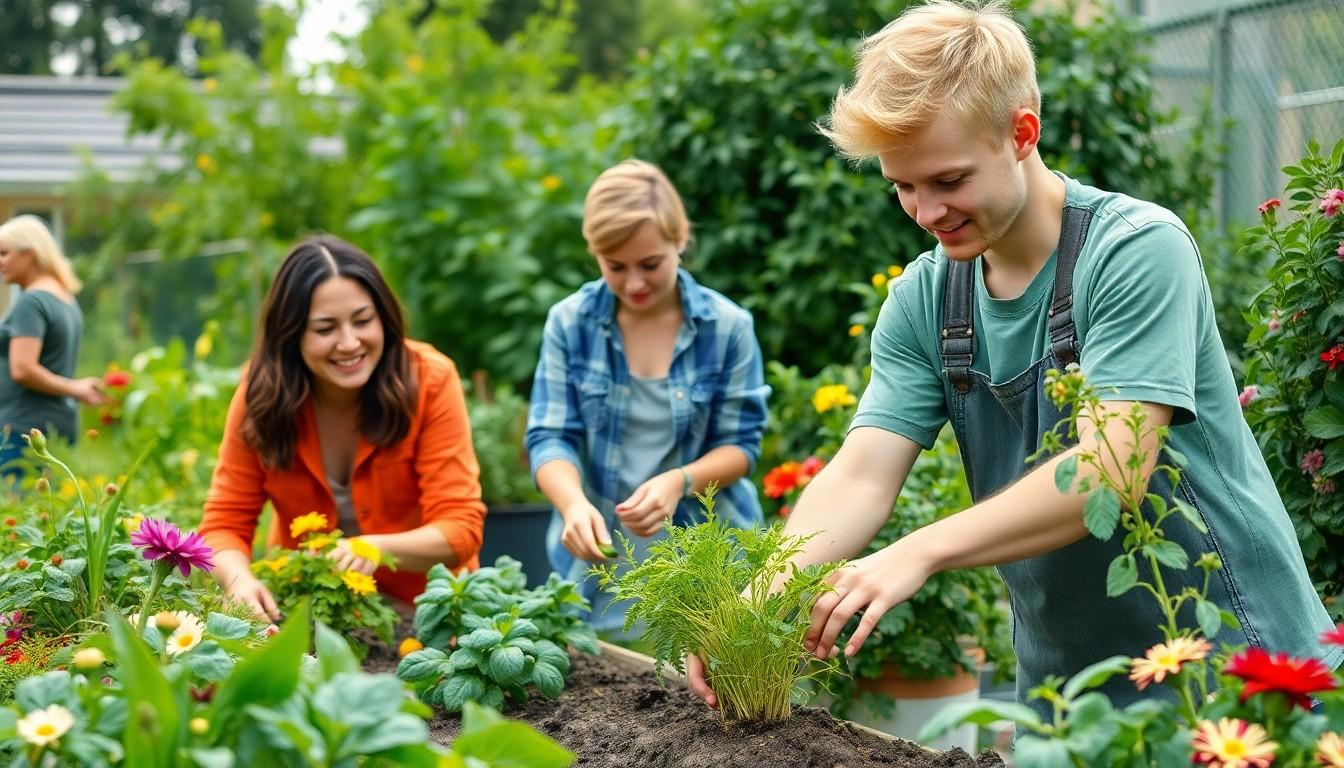In a world where the planet’s health hangs in the balance, sustainable living has become the buzzword on everyone’s lips. But what if there’s a snazzier term that captures the essence of eco-friendly lifestyles? Enter “green living,” the cool cousin of sustainability that’s ready to take center stage. It’s not just about hugging trees and recycling—it’s a lifestyle choice that makes Mother Nature smile while keeping your home stylish and your conscience clear.
Imagine swapping out your plastic straws for bamboo ones and feeling like a superhero in the process. Green living isn’t just a trend; it’s a movement that invites everyone to join the party. So buckle up as we explore this vibrant alternative to sustainable living and discover how to make eco-conscious choices that are as fun as they are responsible. Who knew saving the planet could be this enjoyable?
Another Word for Sustainable Living
Sustainable living encompasses choices that minimize environmental impact. This lifestyle promotes the efficient use of resources, reducing waste, and prioritizing renewable energy sources. Individuals engaged in sustainable practices contribute to a healthier planet and enhance their quality of life.
This approach encourages mindful consumption. People often consider the lifecycle of products, from production to disposal. Opting for locally sourced foods supports both local economies and reduces carbon footprints. Choosing durable goods over disposable alternatives fosters resource conservation.
Community involvement plays a vital role in sustainable living. Participating in local conservation efforts or community gardens strengthens social bonds while promoting environmental stewardship. These collective actions yield significant benefits for both individuals and society.
Adopting green living practices can also bring financial advantages. Energy-efficient appliances lead to lower utility bills. Installing solar panels may result in long-term savings, while reducing reliance on non-renewable energy.
Understanding the importance of biodiversity is crucial. Maintaining diverse ecosystems provides essential services, such as clean air and water. Engaging in activities that support local wildlife enhances natural habitats and promotes balance within the environment.
Ultimately, sustainable living is about balance and informed decision-making. By choosing eco-friendly options, individuals actively engage in protecting the planet. Connecting with like-minded people fosters a sense of community and shared purpose, amplifying the impact of each person’s efforts.
Synonyms for Sustainable Living

Sustainable living encompasses a range of concepts designed to promote environmental health. Various terms capture similar ideas, highlighting diverse approaches and perspectives.
Eco-Friendly Practices
Eco-friendly practices refer to methods that minimize harm to the environment. Examples include using biodegradable products, conserving water, and reducing energy consumption. Opting for reusable materials and efficient appliances also constitutes eco-friendly living. Furthermore, community gardens and local farmers’ markets foster sustainability while strengthening local economies. Individuals can engage in composting and recycling to significantly reduce waste, contributing to a healthier planet.
Green Lifestyle
A green lifestyle emphasizes a commitment to environmental responsibility in daily habits. Choices like using public transportation, biking, or walking lessen carbon footprints. Enjoying organic foods supports sustainable farming practices and enhances personal health. Investing in renewable energy sources, such as solar power, promotes a cleaner energy future. Engaging in outdoor activities also develops a connection to nature, reinforcing the values of conservation and respect for the environment. This lifestyle encourages individuals to make conscious decisions that positively impact the planet.
Benefits of Sustainable Living
Sustainable living offers numerous advantages that extend beyond individual choices. The positive effects on the environment serve as a major incentive for adopting these practices.
Environmental Impact
Sustainable living practices contribute significantly to environmental health. Choosing renewable energy sources reduces carbon footprints, lowering greenhouse gas emissions. Additionally, reducing waste through recycling and composting alleviates pressure on landfills. Preservation of natural resources occurs through mindful consumption of locally sourced products. Biodiversity improves when individuals prioritize plant-based diets and support conservation initiatives. Enhanced air quality results from decreased reliance on fossil fuels, leading to healthier communities. Long-term changes in behavior foster a collective approach, strengthening global efforts against climate change.
Economic Advantages
Adopting sustainable living practices brings economic benefits. Lower utility bills occur with the use of energy-efficient appliances and technologies. Investing in solar panels provides long-term savings and energy independence. Supporting local businesses by purchasing locally sourced goods stimulates local economies and creates jobs. Financial aid and incentives for sustainable choices often exist, making eco-friendly practices more accessible. Increased property values can manifest when homes incorporate green features such as solar power or energy efficiency. These economic advantages underscore the practicality of sustainable living while enhancing personal finances and community resilience.
Challenges in Adopting Sustainable Living
Adopting sustainable living practices presents several challenges that can deter individuals. Cost-related concerns often arise when investing in eco-friendly products or renewable energy solutions. Finding affordable, sustainable options may require more effort compared to conventional choices.
Awareness plays a crucial role in the transition to sustainable living. Many people lack understanding of sustainable practices and their benefits. Educational resources need improvement to provide clear, accessible information on green living alternatives.
Time constraints also impact the ability to adopt sustainable habits. Busy lifestyles may make it difficult to prioritize activities such as meal planning with locally sourced ingredients or participating in community conservation efforts. Improved organization and time management can alleviate this issue.
Behavioral changes contribute to the overall challenge. Developing and maintaining new habits, such as reducing waste and minimizing energy consumption, takes consistent effort. Focus on small, incremental steps can foster lasting changes over time.
Community support significantly influences the transition to sustainable living. Individuals often rely on peers for motivation and encouragement. Establishing networks where people share experiences and tips can enhance commitment to sustainable practices.
Access to resources varies across different regions. Urban areas may offer more sustainable options, while rural locations may lack availability. Advocating for increased access can ensure everyone has the opportunity to embrace sustainable living.
Lastly, cultural factors can shape perceptions around sustainable practices. Overcoming stigmas associated with eco-friendly choices often requires broader societal acceptance. Engaging in conversations with diverse groups can help build a more comprehensive understanding of sustainable living’s value.
Deeper Connection to Local Resources
Embracing green living offers a refreshing perspective on sustainable practices. It’s not just about making eco-friendly choices; it’s about integrating them into a lifestyle that enhances personal well-being while caring for the planet. By adopting this mindset, individuals can enjoy the numerous benefits that come with mindful consumption and community engagement.
The journey towards sustainability is both rewarding and impactful. It encourages a deeper connection to local resources and fosters a sense of responsibility towards the environment. As more people commit to this lifestyle, collective efforts can lead to significant positive changes for future generations. Green living is more than a trend; it’s a transformative way to live harmoniously with nature.

